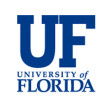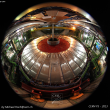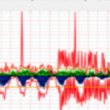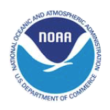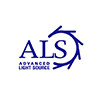Science DMZ Case Studies
Developed by ESnet engineers, the Science DMZ model addresses common network performance problems encountered at any institution by creating an environment that is tailored to the needs of high performance science applications, including high-volume bulk data transfer, remote experiment control, and data visualization.
Since 2009, several science collaborations including those in astrophysics, climate, photon science, genomics and others have benefitted from the Science DMZ architecture at NERSC. Most recently, it has enabled high speed multi-Terabyte transfers between SLAC Linear Accelerator Lab's Linac Coherent Light Source and NERSC to support protein crystallography experiments as well as transfers between beamlines at Berkeley Lab's Advanced Light Source and NERSC in support of X-Ray Tomography experiments.
Science DMZ at the University of Florida
Introducing the Science DMZ ESnet’s network design pattern, called the Science DMZ, solves local area network problems so that science researchers can more effectively use fast research networks to transmit large amounts of data. The Science DMZ allows data transfers to flow through a dedicated portion of a local area network thereby accelerating the data transfer rate. By enabling this… Read More
Science DMZ Implemented at CU Boulder
The University of Colorado, Boulder campus was an early adopter of Science DMZ technologies. Their core network features an immediate split into a protected campus infrastructure (beyond a firewall), as well as a research network (RCNet) that delivers unprotected functionality directly to campus consumers. Figure 1 shows the basic breakdown of this network, along with the placement of measurement… Read More
Science DMZ for Pennsylvania State University & Virginia Tech Transportation Institute
The Pennsylvania State University's College of Engineering (CoE) collaborates with many partners on jointly funded activities. The Virginia Tech Transportation Institute (VTTI), housed at Virginia Polytechnic Institute and State University, is one such partner. VTTI chooses to collocate computing and storage resources at Penn State, whose network security and management is implemented by local… Read More
Science DMZ National Oceanic and Atmospheric Administration
The National Oceanic and Atmospheric Administration (NOAA) in Boulder houses the Earth System Research Lab, which supports a "reforecasting" project. The initiative involves running several decades of historical weather forecasts with the same current version of NOAA's Global Ensemble Forecast System (GEFS). Among the advantages associated with a long reforecast dataset is that model forecast… Read More
Science DMZ Implemented at NERSC
In 2009, both NERSC and OLCF installed data transfer nodes (DTNs) to enable researchers who use their computing resources to move large data sets between each facility's mass storage systems. As a result, wide area network (WAN) transfers between NERSC and OLCF increased by at least a factor of 20 for many collaborations. As an example, a computational scientist in the OLCF Scientific Computing… Read More
Science DMZ for ALS
Many beamline scientists at Berkeley Lab’s Advanced Light Source (ALS) are or will be experiencing slower network speeds because of instrument upgrades. These new instruments, or more specifically detectors, are yielding immense data output rates on the scale of hundreds of megabytes per second, which are causing bottlenecks in many of the beamline workflows.For example, at one of the X-ray… Read More


